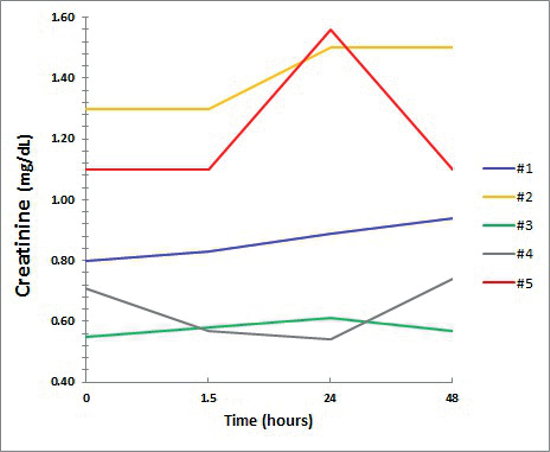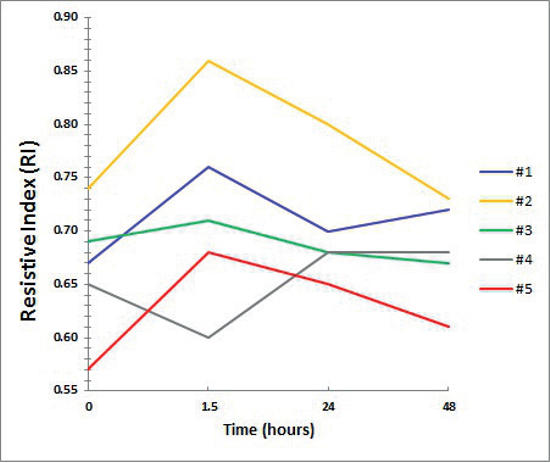C. Matsunaga Martin1; C.A.B. Lorigados1; M.M. Kogika2; S.I. Miyashiro2; A. Sendyk-Grunkraut1; K.M. Zardo1; A.C.B.C. Fonseca-Pinto1
Introduction
Contrast-induced nephropathy (CIN) is secondary to intravenous administration of iodinated contrast media (ICM) used in radiological studies. The definition is a relative increase of serum creatinine (sC) at least 25% from baseline or a > 0.5 mg/dL rise in sC after 24–48 hours of contrast exposure. Risk factors related to CIN in this study were: older animals, preexisting cardiovascular disease, or use of nonsteroidal antiinflammatory drugs.
Objectives
Identify the occurrence of CIN in dogs with risk factors, which underwent computed tomography after administration of a low-osmolar nonionic ICM [iohexol (I)], and the ultrasonography as a tool to identify the renal vasoconstriction related to the physiopathology of CIN.
Methods
The sC values of five dogs (two males, three females, different breeds) were obtained before and 1.5, 24 and 48 hours after ICM administration (600 mg/kg IV). B-mode, color and pulsed Doppler renal sonography were performed simultaneously.
Results
Four dogs (#1, #2, #3 and #5) showed sC increase after 24–48 hours of ICM infusion, especially in one (#5), whose sC increased more than 25% from baseline and was related to CIN (Figure 1). Intrarenal vascular resistivity index increased after 1.5 hours, decreasing in 24–48 hours, in all these patients (Figure 2). In color Doppler evaluation, the vascular filling didn't change over time, except in one dog (#5), which reduction after 1.5 hours was observed, normalizing in 24 hours. Renal architecture and echogenicity of all dogs remained unchanged.
| Figure 1 | 
|
|
| |
| Figure 2 | 
|
|
| |
Conclusion
Studies with larger numbers of animals are required to determine whether color Doppler signal reduction may be predictive of CIN or occurs randomly.